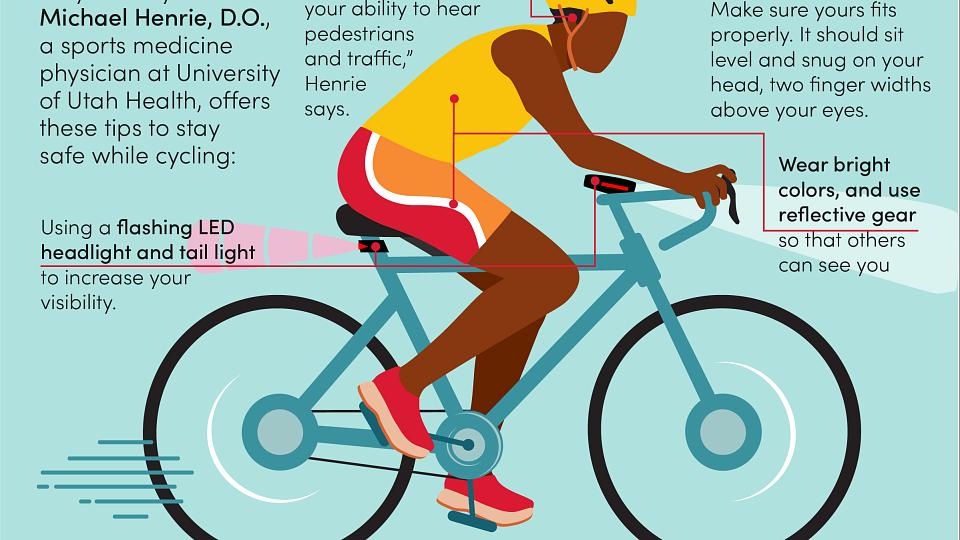
Mountain Biking Safety for Every Trail
America took home the silver medal for women’s mountain biking at the Paris 2024 Olympics. Haley Batten, a Park City, Utah, native, had the best finish ever by a United States athlete in the sport.
However, mountain biking can be a risky sport, requiring specialized equipment and sometimes taking place on difficult terrain. That’s why it’s important to keep these safety tips in mind before you head onto the trail.
Know Your Risks
Most injuries happen on downhill sections of trails. Even when you are not pedaling, your bike can gain momentum and hit obstacles harder with more force than on level or uphill ground. Many of the most serious injuries happen when a rider goes over the handlebars and lands on their head.
Many crashes also happen on turns—particularly when traveling downhill—with loose soil or rocks. It’s important to learn proper riding technique and have good tires that are properly inflated to decrease the chance of “washing out” on curves.
But don’t let your guard down on flat or uphill trails, where injuries can still happen. Some crashes happen when a rider loses focus on the trail—even for a split second.
“Focusing on all of the trail features that are coming up is critically important,” says Stuart Willick, MD, a sports medicine specialist at University of Utah Health. “Do your best not to get distracted or look away from the trail in front of you.”
Many injuries occur when there is a mismatch between the technical nature of the trail and the ability level of the rider.
"The key to preventing injury is to ride within your ability level," Willick says. "Increase your time riding on technical terrain gradually."
Check Your Gear
You can put yourself at risk if your bike is not in good condition. Before you hit the trail, check your bike for faulty parts with the following tips:
- Inspect the entire drive chain, including the pedals
- Make sure the brakes are in good working order
- Inspect the tires for proper inflation and splits or cracks in the rubber
But your bike isn’t the only thing that needs to be protected. Wear a helmet, glasses, and riding gloves to protect yourself against bad scrapes during falls.
Get in Shape
It’s important to be in good shape. Stretch before riding, hydrate, and fuel your body with a healthy meal or snack. But don't push your body too hard, Willick cautions.
"You are more likely to get hurt when fatigued,” he says. “Know when to take a break and when to call it a day. We would rather see you on the trails than in clinic.”


